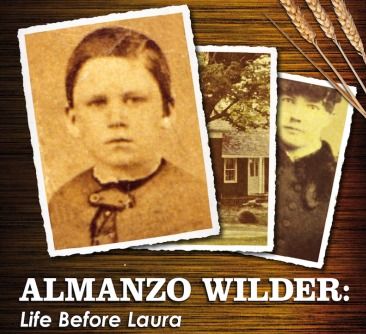Disclosure: many of the links in
this post are affiliate links. If you purchase any Home School
Adventure Co. products through these links, I earn affiliate income. Do
not feel obligated to do that. Regardless of the affiliate relationship, I only give
the opinion of myself and my kids here.
A couple of months go, I did a
giveaway for a great new program called Philosophy Adventure, put out by
Home School Adventure Co. At that point, I promised a review in early August.
Well, it is time. Or past time. I really should have been posting this a week ago.
The full name of the program we've been using is
Philosophy Adventure - Pre-Socratics. It is intended for students in 6th-12th grades, so I've been using it with my big boys, 11th, 9th and 7th grades. Pretty much covers the recommended age range, huh?

The program itself comes with a Reader (the main text), a Student Workbook (which contains journal pages, among other things), and Teacher Resources (which contain answers, timelines, flashcards, etc.) There are optional resources too, that can be added in. One is for Bible Memory work (
Philippians in 28 Weeks) and the other is for literature (
The Wise Woman with Literary Analysis Journal Questions). We did use all three of these "programs" together, but this review will focus on the Philosophy Adventure part of things.
Another resource we used, which helped me to bring in my little two (4th and 2nd grades) is from Knowledge Quest.
A Child's Geography, Volume 3: Explore the Classical World. This book is intended for 1st to 6th graders, but I find it is also great for my 7th grader, so all three of the younger ones are using it.
This program is flexible -- do you want to spend a couple of months going through philosophy? Do a philosopher per week, and you can complete the materials in two months. Work on a philosopher over two weeks for a one-semester program. Or spend all year, covering a new philosopher every month. Depending on how in-depth you get and how much time you spend, you could assign the following suggested high school credits:
- English Composition - 1/4 to 1/2 credit
- World History/Geography - 1/4 to 1/2 credit
- Speech/Communication - 1/4 to 1/2 credit
- Logic/Critical Thinking - 1/4 to 1/2 credit
We tried a couple different things, and we've settled on the "Philosopher of the Month" idea.
What that looks like in our house:
Week 1: read about the philosopher aloud from the reader. The high schoolers do vocabulary cards of the bolded words in the text. The kids fill out the Philosopher's Notebook Page, do the timeline work, do the mapping work, and do a week of Philippians in 28 weeks. I also do the reading for a chapter of A Child's Geography. And honestly, my big guys are listening in on that too.
Week 2: Do the "Write" activities, and work on the memory cards, and review the timeline. Do another week of Philippians. Do a chapter of The Wise Woman with Literary Analysis Journal Questions. Finish the Child's Geography chapter by doing activities.
Week 3: Do the "Think" activities, continue to work on memory cards, and review the mapwork. Do another week of Philippians. Read the next Child's Geography chapter.
Week 4: Do the "Speak" activities, continue to work on memory cards, and go back over the reading for that philosopher. Do another week of Philippians. Do the next chapter of The Wise Woman. Do activities for the Child's Geography chapter.
Week 5: (okay, so we're doing it over more than a month) Wrap it up - do the creative writing assignment, take any quizzes or tests, go over the Biblical Worldview section of the reader again, and do a quick preview of "the next guy" that we'll be studying (specifically, the little tagline and quote). Do another week of Philippians. Do some review of the two chapters of Child's Geography.
Lather. Rinse. Repeat.
What that means for August:
Week one: Read about Xenophanes. Be very grateful that Stacy puts phonetic pronunciation stuff in the text so I don't have to go look it up. Reading the text aloud usually takes us about a half hour, maybe a bit more. (It is way too interesting for me to be watching the clock as I read!) We create vocabulary cards for words like hexameter, anthropomorphic, cosmogony, etc.
The kids fill out the Notebook Journal Page, which asks questions like "Name three natural phenomena about which Xenophanes wrote." and "What is one possible reason Aristotle disregarded Xenophanes' work as a natural scientist?"
They do the mapwork, which involved labeling bodies of water (Adriatic Sea, Ionian Sea, Agean Sea, etc.) and labeling some locations (such as Colophon and Sicily) and listing why they are important in regards to Xenophanes.
They add some things to the timeline they are creating on the iPad.
We work on Philippians in 28 weeks, which had them memorizing Philippians 1:7-11, and reflecting on being imprisoned for their faith, among other things.
We start chapter 2 of Child's Geography, reading and doing narration questions for the chapter Greece, Pt. 2: In The Beginning. This chapter covers all kinds of fun things in thirteen pages.
Week 2: Together, we read the "Write" section aloud, and the kids absolutely love this assignment: to write a terrible first draft for a speech. This is a concept I've tried to get them to understand, and Stacy did it well. The first draft is about getting ideas DOWN on paper, not about having a beautiful, polished result. That's what editing is for. There are a few pages of "planning" for them to write in. I should mention that my high school boys get a printout and they write things out on paper. The 7th grader uses the "type it in" feature, types up his responses, and prints that out. The kids also work on the memory cards, which are really easy to print two-sided.
They do the next week of Philippians, similar to week 1.
They do chapter 3 of The Wise Woman with Literary Analysis Journal Questions. This involves me reading chapter 3 aloud (text is included), and then we discuss the 24 questions throughout the week. The questions are great... things like "How does MacDonald use anthropomorphism/personification at the start of chapter 3?" and "Have you found your attitude plays a significant role in determining the strength of your problem-solving skills? Explain your answer." Really, how amazing is it that we happened to do the anthropomorphism thing THIS week, after learning the word last week? It isn't like I was told that there was any sort of correlation to try to match.
For Child's Geography, we do a bunch of activities and mapping and timelines and cooking and...
Week 3: Together, we read the "Think" section aloud, and the kids get going on the assignment. Connor will love this one, as it is dealing with "How can we know what we know?" He loves thinking about truth and whether it really exists. The assignment is to answer three questions, and Connor will write about them. William, Thomas and I will discuss them a little, then William will write. Thomas will just talk to me some more.
We also review the map assignments (including re-reading the map page of the reader), and memory cards. Another week of Philippians. Start Chapter 3 of Child's Geography.
Week 4: Together, we read the "Speak" section aloud, and the kids will do the assignment. This assignment is pretty easy, actually, as they will be reciting part of the Philippians memory work to an audience (other works can be substituted). We re-read the philosopher section of the Reader (up to he map page).
The extra stuff happens again -- the next week of Philippians, the next chapter of The Wise Woman, and the activities for the current Child's Geography chapter.
Week 5: This is our wrap-up week. As a group, we re-read the last couple pages for Xenophanes (Xenophanes & the Eleatics, Direct from the Source, Biblical Worldview). We go over the Creativity assignment, which has them describing a scene and telling what happens -- in 15 minutes of writing. Again, I send Connor off to just do it, but William and Thomas do some brainstorming with me first.
The high school students take the quiz. William gets to choose whether to write out his answers or to do it orally (he's my severely dyslexic one).
And then we do a little teaser about the next philosopher. Heraclitus is "The Weeping Philosopher, The Obscure, The Dark" and said, "You cannot step in the same river twice." We run through the little sidebar, learning that he lived from 535 to 475 BC, and his contemporaries included Daniel, Buddha, Confucius, Esther, and the last two philosophers we studied.
We also do another week of Philippians, and we do some review of the most recent Child's Geography chapters, particularly including some of the activities we didn't have time for before.
What do we think?
This is fun. We started with a two weeks per philosopher pace, and we did not like that. But at this pacing, we are able to still do other schoolwork, and enjoy our time learning the amazing content included in the text. Even my writing-phobic kids are able to do the writing assignments, as this is not rushing them too much.
The kids love that the book is addressing things like "According to a popular survey, many people claim they fear public speaking more than death." They appreciate that this isn't telling them to just buck up and do it. The book acknowledges that speaking can be scary, and eases you into it.
It just has a gentle approach in general. My 11th grader seems to think that this is "too easy" to be high school level, yet he acknowledges that he is learning a lot. I think that is a ringing endorsement... because to me, philosophy has always been this big, scary thing that you have to be really smart to "do" or to understand. Philosophy Adventure: Pre-Socratics allows even my 12 year old to "do" philosophy and to really learn something.
My only complaint about the program is that there isn't a Volume 2. Maybe someday.
Oh, and if I were to be purchasing this, I would want one of the mixed-packages -- including the reader as a physical book, and a CD that contains digital teacher and student books, which costs $69.95. In the end, I would undoubtedly decide to go for the download version though, which is only $39.95. That is the package that my review is based on.
And check out this amazing giveaway!!
a Rafflecopter giveaway







.jpg)

























